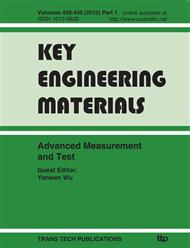p.859
p.865
p.870
p.875
p.880
p.884
p.890
p.896
p.902
Airflow Simulation of the Huge Telescope Assemble
Abstract:
With the three-dimensional computational fluid dynamics method, the airflow effects over the huge telescope assemble is investigated in this article. The distributing of velocity field and natural convection are studied by modeling and simulating the turbulent airflow of the huge telescope. Numerical simulations show the best observation direction is the 90o angle between the main optics axis and the horizontal line in which the air velocity distribution is the least. And the air temperature distribution and uniformity around the telescope are also provided by simulation.
Info:
Periodical:
Pages:
880-883
Citation:
Online since:
June 2010
Authors:
Price:
Сopyright:
© 2010 Trans Tech Publications Ltd. All Rights Reserved
Share:
Citation:


